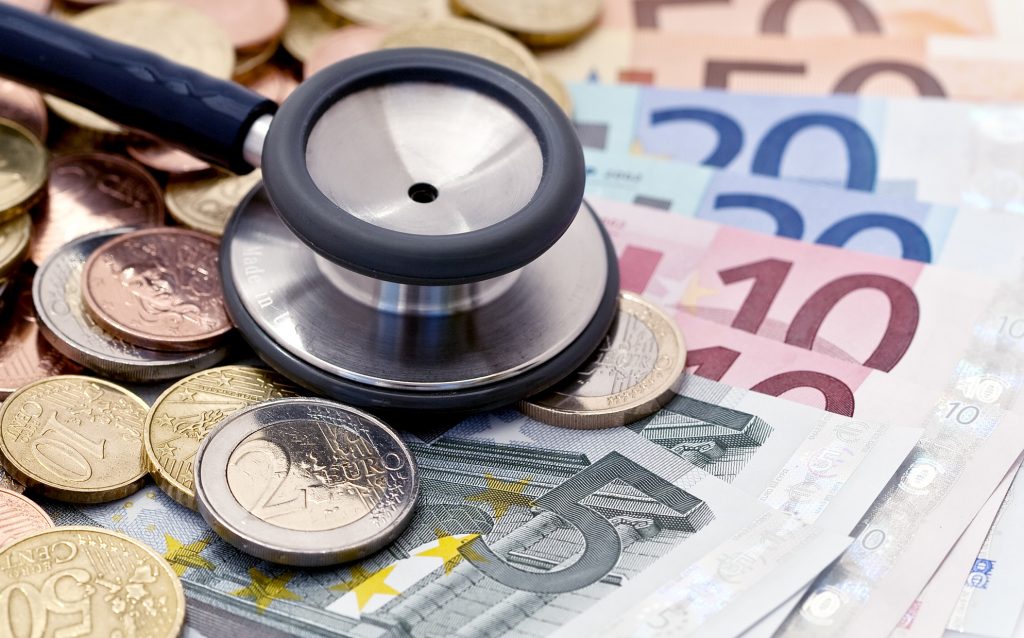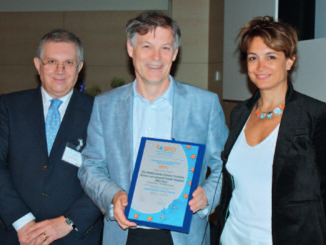A growing body of literature has described the so called “financial toxicity” of cancer, a common consequence of treatments, that sometimes leads patients to bankruptcy, and affects quality of life and clinical outcomes.
“We don’t travel; we don’t do anything now because it’s a $100,000 illness… What are you going to do? Caught between a rock and a hard spot”. That’s the experience of a 67-year-old insured U.S. woman with metastatic breast cancer, describing how cancer care changed her life due to high costs. The story was reported in a paper (Oncology (Williston Park) 2013, 27(2):80-149) by Yousuf Zafar and Amy Abernethy from Duke Cancer Institute, Durham, North Carolina, in 2013, where authors first mentioned financial toxicity as a new cancer treatment-related adverse event: “Out-of-pocket expenses related to treatment are akin to physical toxicity, in that costs can diminish quality of life and impede delivery of the highest quality care” they wrote.
Let the figures speak
As a matter of fact, cancer is one of the most costly diseases to treat. Data from U.S., where the financial toxicity is most known and debated, show that cancer patients experience a higher out-of-pocket financial burden than those with other chronic diseases, and that they have to struggle with the bad economic consequences of care many years after they are diagnosed. That’s because they may be asked to pay for ongoing therapies or they have to face long term effects of treatment itself. New and innovative drugs are pushing the average treatment costs higher and higher, often reaching, or even exceeding, a wildly out of hand cost of $ 10.000 a month. Out-of-pocket expenses account for at least 20% of the income for 13% of non-elderly patients, and half of elderly U.S. citizens pay at least 10% of their income towards this kind of costs (JNCI 2016, 108(5): djv370). Moreover, financing medical expenses makes 33% to 80% of cancer survivors using their savings and 2% to 34% borrowing money or having medical debts, and the likelihood of filing for bankruptcy is 2,65 times higher in patients with cancer diagnosis compared to those with no cancer history (JNCI 2016, 108(5): djv370). Last but not least, productivity drops with a cancer patient missing 22,3 more work days per year than people without any cancer treatment.
Toxicity changing your life… and outcomes
It’s not just a matter of empty wallets. “The financial burden of cancer care dramatically affects daily life, forcing patients to cut back on food and clothing and not adhere to treatment, and families describe having to work longer hours to cover expenses, all to make ends meet” Zafar said. Subjective financial distress is another key component of financial toxicity, suggesting that more than one third of insured cancer patients face expenses greater than expected. Coping strategies vary depending on the level of financial distress and on some sociodemographic characteristics, but very frequently result in non-adherence to treatments by means of not filling a prescription, taking less of a medication, and not completing a recommended test or medical examination. All this leads to worse clinical outcomes and increased mortality (Psychooncology 2016, 25(6):719-25). A study analyzing data from Western Washington State found that cancer patients who declared bankruptcy had a 79% greater mortality risk than those who did not, highlighting for the first time a strong link between extreme financial distress and increased risk of mortality (JNCI 2016, 108(5): djv370).
Measuring financial toxicity
As usually happens for therapy-related physical adverse events, financial toxicity must be addressed as soon as possible following cancer diagnosis. “It is the elephant in the room. You can ask your patients one simple question about whether their cancer care is covered by a drug plan to get the conversation started” Yousuf Zafar said (Oncology (Williston Park) 2013, 27(2):80-149). But measuring financial toxicity could be a big issue. “The COmprehensive Score for financial Toxicity (COST) score, a patient-reported-outcome instrument based on 11 questions, has been recently proposed as a tool in U.S. (Cancer 2017, 123(3):476-484), but it is not clear whether this questionnaire may work in different health systems” Perrone wrote in his article. “Even generic and validated tools like EORTC QLQ-C30 questionnaire can be useful, but we definitely need more appropriate instruments, context-driven and tailored to the different socio-cultural characteristics of patients, if we really want to know causes and risk factors underlying the financial toxicity of cancer. That’s the only way to find effective solutions to such an issue for almost every cancer patient” claimed the Italian expert, who has started a project to create a new tool to specifically address financial toxicity in the Italian context.
Higher competition, higher prices
The cost of drugs is the one of the main reasons of financial toxicity in U.S. cancer patients. In a healthy functioning market, competition should lead to price decreases, but that is not happening with cancer drugs: prices keep increasing despite several competitors recently entered to the market (even with biosimilars). New anticancer drugs are launched at extremely high prices as recently happened for Tisagenlecleucel (Kymriah; Novartis) approved in 2017 by FDA for pediatric and young adult acute lymphoblastic leukemia; the list price for this chimeric antigen receptor T-cell (CAR-T) drug delivered as a one-time infusion is $475.000 (JAMA 2017, 318(19):1861-1862). Is this price really justifiable? Vinay Prasad from Oregon Health and Science University, Portland, recently debunked the myth of sizable outlay necessary to bring a drug to the market – a common justification for high prices – calculating a cost of $648 million, significantly lower than the previously estimated figure of $2,7 billion (JAMA Intern Med 2017, 177(11):1569-1575) . Moreover, as highlighted by Daniel Goldstein from Emory University, Atlanta, changes in prices after launch are another big issue for anticancer drugs, with an inflation-adjusted mean cost increase of 18% in a mean follow-up period of 8 years (J Clin Oncol 2018, 36(4):319-325) . The monthly costs for rituximab and trastuzumab rose by 49% and 44%, respectively, since approval. “We definitely need new regulations for this market” Goldstein wrote.
And what about Europe? “We must deal with a ‘schizophrenic’ system where drug approval is centralized and the reimbursement is decentralized. The main problem in the EU is the access to treatments, especially for the Eastern countries” Francesco Perrone from National Cancer Institute, G.Pascale Foundation in Naples, commented.
Don’t blame (only) your Health System

From the U.S. perspective, a good health insurance can make the difference in terms of financial toxicity related to out-of-pocket costs, including copayment, deductibles and coinsurance. However, back to the European side of the Atlantic ocean, in Italy, the public Health System covers the vast majority of the health costs for cancer patients. “The financial impact of cancer in countries with public health systems is almost unknown” Perrone stated. In a paper published on Annals of Oncology in 2016 the authors evaluated the association between financial difficulties and clinical outcomes in the Italian setting, focusing on data from 16 prospective multicentre trials and accounting for almost 3.700 cancer patients. “To make a long story short, we found that 26% had some financial burden at baseline, and a further 22% developed financial toxicity while on treatment” Perrone said. The authors used question 28 (Q28) of the EORTC QLQ-C30 questionnaire for Quality of Life (QOL; ‘During the last week, has your physical condition or medical treatment caused you financial difficulties?’) to measure financial burden and toxicity defined as any financial difficulty reported at baseline questionnaire and score worsening in a subsequent questionnaire, respectively. “Moreover, financial burden was predictive of a higher chance of worse global QOL response” he added, concluding that financial toxicity is not just a matter of Health System, and it is worthy of investigation even in public health frameworks. “As a first step, it could be very interesting to perform the same analysis in other European countries, a common European effort despite the lack of a common EU Health policy” he suggested.
Focus on collaboration
Cancer care can result in financial toxicity and distress even for insured patients or for patients not directly paying for the prescribed expensive drugs. How can this situation be changed? Which are the most effective strategies to avoid or at least to minimize financial toxicity of cancer? Experts claim that there is no “one-fits-all” solution and that interventions must be focused on all involved parties. “Long-term solutions must include policy shifts involving how we set prices, negotiate prices, and insure patients. But for more immediate solutions, interventions should focus on the oncologist and patient” Zafar wrote in a commentary on JNCI. And when it comes to focusing on the patient-physician relationship, one should first try to identify barriers hindering a cost discussion. Some patients may avoid the discussion because they want the best care regardless of costs, or because they perceive the financial burden as bearable if health benefits are expected from the treatment. And even if they want to talk about costs, patients might be embarassed, might believe that doctors do not have time for this or that a medical doctor is not the right person to discuss cost concerns. Interestingly, the same barriers are reported by oncologists asked why they do not start a cost conversation with their patients (Oncology (Williston Park) 2013, 27(4):253-4, 256). “We need more patient and oncology literacy on financial toxicity of cancer and shared decisions about treatments” Zafar concluded.
Financial toxicity in a nutshell
Attempts at better understanding causes and risk factors of the heavy financial burden of cancer are still ongoing. Some causes and risk factors are easy to identify, but a lot of work remains to be done to have a clear picture.
Who’s at higher risk?
- Patients with advanced stage cancer, disease requiring chemo- or radiation therapy, underlying comorbitities
- People at younger age at diagnosis
- Lower income household groups
- Ethnic minorities
- Patients lacking health insurance coverage
Household-related risk factors
- Whether the patient makes the most money for the household
- Debts before being diagnosed with cancer
- Assets
- Costs related to the specific cancer
- Effect of cancer and its treatment on the ability to work
- Insurance plans and what they cover





